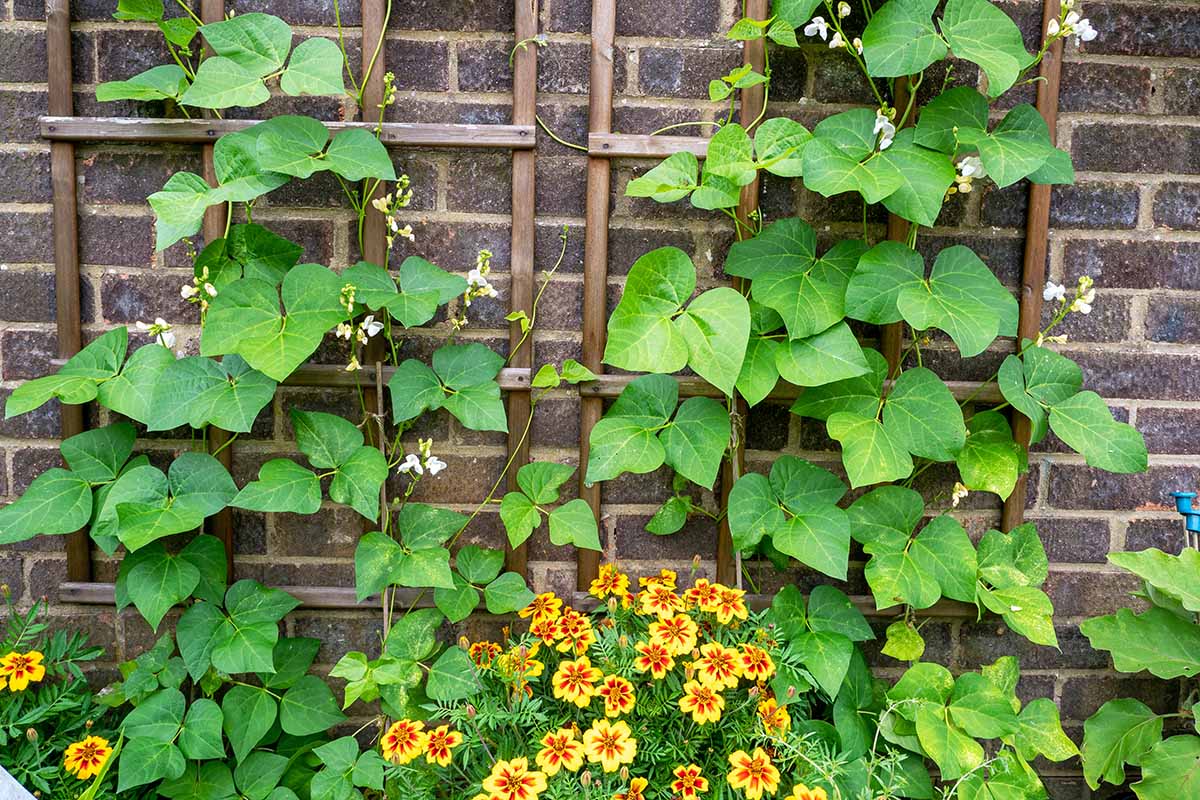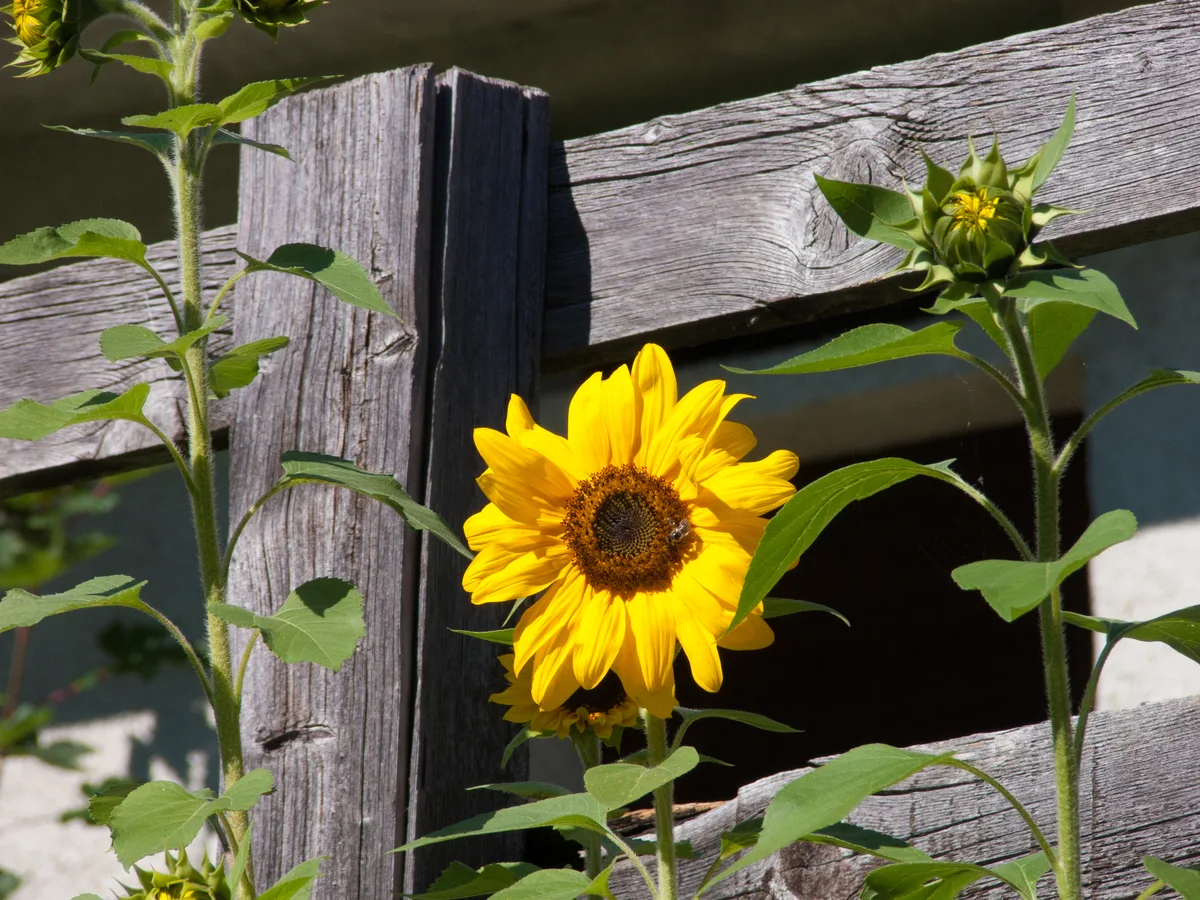The Best Pole Bean Companion Plants
The Best Pole Bean Companion Plants
Pole beans are a popular vegetable that can be grown in many different climates. They are relatively easy to care for and can produce a bountiful harvest. One way to ensure that your pole beans thrive is to plant them with the right companion plants.
Companion planting is a gardening practice that involves planting different types of plants together in order to benefit each other. Some plants can help to deter pests, improve soil quality, or even increase the yield of other plants.
When choosing companion plants for pole beans, there are a few things to keep in mind. First, consider the needs of your pole beans. They need full sun and well-drained soil. They also benefit from nitrogen-rich soil, as they are legumes and can fix nitrogen from the air.
Second, think about the pests and diseases that are common in your area. Some companion plants can help to repel pests or attract beneficial insects that prey on pests. For example, marigolds can help to deter Mexican bean beetles, and nasturtiums can attract ladybugs.
Finally, consider the growth habits of your companion plants. Pole beans can grow quite tall, so you'll need to choose plants that won't be shaded out. You'll also need to make sure that your companion plants have similar water and fertilizer needs.
Here are some of the best companion plants for pole beans:
- Corn. Corn is a tall plant that can provide support for pole beans to climb. It also helps to improve soil aeration and drainage.
- Cucumbers. Cucumbers and pole beans are both heavy feeders, so they benefit from being planted together. They also help to shade each other from the sun, which can help to prevent powdery mildew.
- Eggplant. Eggplant and pole beans are both nitrogen-fixing plants, so they can help to improve the nitrogen content of the soil. They also have similar water and fertilizer needs.
- Peas. Peas are another nitrogen-fixing plant that can benefit pole beans. They also help to suppress weeds and improve soil tilth.
- Potatoes. Potatoes and pole beans can be planted together in a "three sisters" garden. The corn provides support for the beans, the beans fix nitrogen for the corn and potatoes, and the potatoes help to suppress weeds.
- Squash. Squash and pole beans can be planted together in a "three sisters" garden. The corn provides support for the beans, the beans fix nitrogen for the corn and squash, and the squash helps to shade the soil and prevent weeds.
- Sunflowers. Sunflowers are tall plants that can provide support for pole beans to climb. They also help to attract beneficial insects that prey on pests.
- Swiss chard. Swiss chard is a leafy green that can help to suppress weeds and improve soil quality. It also has similar water and fertilizer needs as pole beans.
These are just a few of the best companion plants for pole beans. When choosing companion plants, it's important to do your research and select plants that will benefit each other and thrive in your growing conditions.
Pole beans are a delicious and versatile vegetable that can be grown in many different climates. But did you know that certain plants can help your pole beans grow even better? Companion planting is the practice of planting certain plants together that benefit each other. For pole beans, some of the best companion plants include:
- Corn: Corn provides a trellis for pole beans to climb, and the beans in turn fix nitrogen in the soil, which corn needs to grow.
- Cucumbers: Cucumbers and pole beans both like full sun and well-drained soil. They can also help to shade the soil around the beans, which can help to prevent weeds from growing.
- Eggplant: Eggplant and pole beans are both heavy feeders, so they can benefit from being planted together. The beans can help to fix nitrogen in the soil, which the eggplant needs to grow.
- Marigolds: Marigolds are a natural insect repellent, so planting them near your pole beans can help to deter pests such as aphids and beetles.
- Peas: Peas and pole beans are both legumes, which means they have a symbiotic relationship with bacteria in the soil that helps them to fix nitrogen. Planting them together can help to boost the nitrogen levels in your soil, which can benefit both plants.
If you're interested in learning more about pole bean companion planting, I recommend visiting Gardenia Inspiration. This website has a wealth of information on the topic, including a list of the best companion plants for pole beans, as well as tips on how to plant and care for them.
FAQ of pole bean companion plants
- What are the best companion plants for pole beans?
Pole beans are a nitrogen-fixing crop, which means they can add nitrogen to the soil. This makes them a good companion plant for other plants that need nitrogen, such as carrots, celery, chard, corn, cucumber, eggplant, peas, potatoes, radishes, and strawberries.
Pole beans can also help to deter pests and diseases. For example, they can help to repel aphids, beetles, and borers. They can also help to attract beneficial insects, such as ladybugs and parasitic wasps, which can help to control pests.
- What are some good companion plants for pole beans to avoid?
There are a few plants that you should avoid planting near pole beans. These include:
- Tomatoes: Tomatoes and pole beans compete for the same nutrients, so planting them together can stunt their growth.
- Cabbage family plants: Cabbage family plants, such as broccoli, Brussels sprouts, and cauliflower, are susceptible to a disease called clubroot. Pole beans can carry the spores of clubroot, so planting them near cabbage family plants can increase the risk of the disease spreading.
- Melons: Melons and pole beans attract the same pests, so planting them together can make it more difficult to control pests.
- How far apart should pole beans be planted?
Pole beans should be planted 2-3 feet apart. This will give them enough space to grow and produce a good crop.
- How much sunlight do pole beans need?
Pole beans need full sun to grow well. They should be planted in a spot that gets at least 6 hours of direct sunlight per day.
- How much water do pole beans need?
Pole beans need regular watering, especially during hot, dry weather. Water them deeply once a week, or more often if the weather is hot and dry.
Image of pole bean companion plants
- Nasturtium: Nasturtium is a flowering plant that repels aphids, beetles, and other pests that can damage pole beans. It also attracts beneficial insects, such as ladybugs and hoverflies, which help to control pests.

- Marigold: Marigolds are another flowering plant that repels pests. They are especially effective against nematodes, which can damage the roots of pole beans. Marigolds also improve the soil quality, which can benefit pole beans.

- Cucumber: Cucumbers and pole beans are both vining plants, so they can be planted together to save space in the garden. Cucumbers also help to shade the soil around pole beans, which can help to keep the soil moist and cool.

- Sunflower: Sunflowers are tall plants that can provide shade for pole beans. They also attract beneficial insects, such as bees and butterflies, which help to pollinate the pole beans.

- Melissa: Melissa, also known as lemon balm, is a herb that repels pests and attracts beneficial insects. It can be planted around pole beans to help protect them from pests and improve their pollination.
Post a Comment for "The Best Pole Bean Companion Plants"